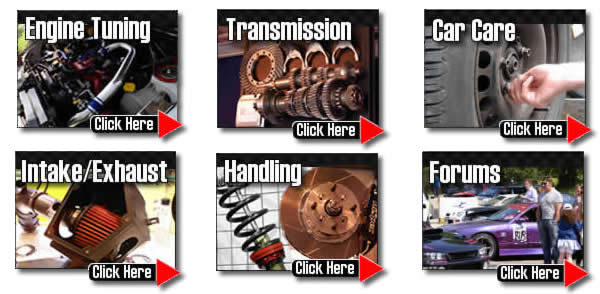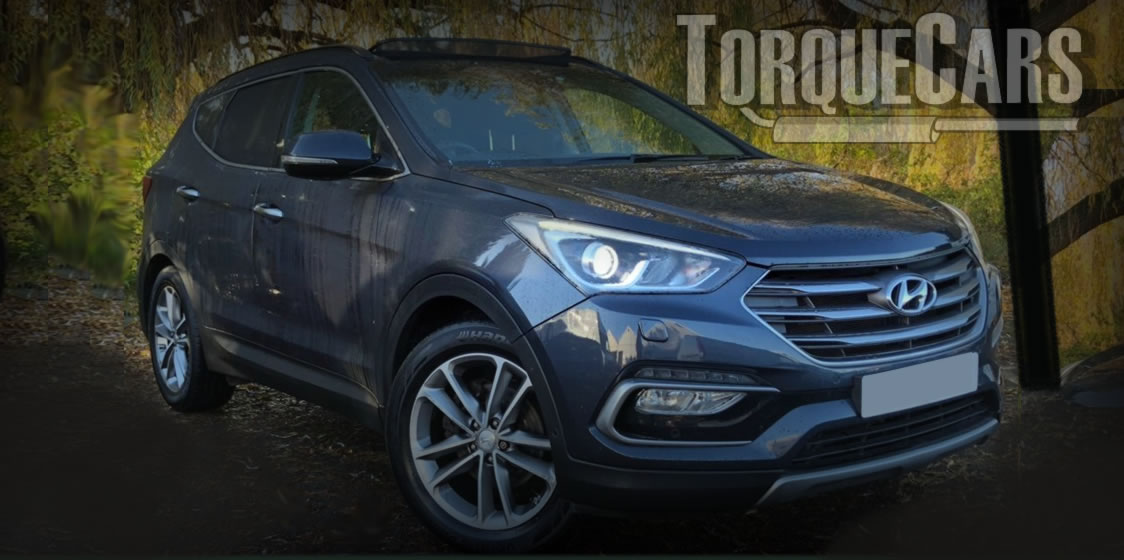Tuning the Hyundai Santa Fe
"Thank you for reading our Hyundai Santa Fe tuning guide."
The Santa Fe is a good car tuning project to execute. Sit down first and research Santa Fe tuning to avoid making the usual expensive slip ups we often come across.

Handling/Suspension upgrades
Improving the handling for people first priority in your Santa Fe tuning project.
Fully adjustable suspension allows you to fine tune the handling of you Santa Fe radically benefitting your drive.
Drop the car by as much as 23mm - 36 mm. and fit performance stiffer dampers, bigger drops will need other modifications in most instances.
Top end power should be your overall aim with a nice fat wide peak torque band.

Smaller engines do not provide much of a return in terms of power so start with a bigger engine. Engine swaps are a good option if you have a small engine size.
Power mods.
Typically these sports mods are usually fitted by our members, decide how far you want to go before you get started.
Getting the correct grade of tuning modifications for your planned usage of the car is a time and money saver. Stage 3 motor sport mods just don't work well on the road and will make the car undrivable.
Please watch our introduction Video tutorial to car tuning. Be sure to subscribe and support our new channel.
How to tune your car
- Improve the handling
Focus on Suspension improvements, such as coilovers and make sure the bushings are in good order and that the alignment is correct. Then focus on improving the brakes, with a big disk brake conversion kit and fast road brake pads.
- Remove restrictions
Focus on the intake and exhaust with filters being the common point of restriction in a tuned car. Intercoolers may also become restrictive on turbo engines so this may also need to be uprated.
- Burn more fuel & air
Increase the fuelling so it matches the air coming into the engine. The ratio is important so you need to improve the fuel pump and injectors, so the head mods, big valve conversions, fast road camshafts and forced induction upgrades extra supply of air is adequately met.
- Test and replace any weak parts
Weak areas are commonly the clutch, the turbocharger and pistons and crankshaft in a highly tuned engine. Makes sure these components will cope with your power aspirations.
- The Tune or Remap
A cars ECU controls the fuel, timing, spark and even the turbo in some cases, so to fully extract your gains you should remap the car last and this will fully release the power. Some cars are easy to map, and others require piggyback ECU's or aftermarket ECU's but this is the most vital step of your tuning project.
Modifying to Stage 1:
Sports exhaust, Remap, Alloy wheels, Lighter flywheel, Suspension upgrade (drop 23mm - 36 mm.), Panel air filter.
Modifying to Stage 2:
Power/Sport clutch, Ported and polished head, fuel pump upgrades, Fast road cam, high flow fuel injector.
Modifying to Stage 3:
Engine balancing, Internal engine upgrades (pistons/head/valves), Adding or upgrading forced induction (turbo/supercharger), Competition cam, Sports gearbox.
Peak power is nice in motorsport but for a drivable and fun car you need a wide torque band and perhaps extending the rev range.
In this article we shall give a little insight into the world to the best upgrades for your car, but we'd encourage you to spend some time on the site looking into the details of each type of performance part.A fast road camshaft will be one of the best NASP power mods you can do with a single part fitted to your engine.
It improves the intake and exhaust flow and increases the power if done right. Ideally you'd add other mods and finish up with a remap. TorqueCars would caution you not to go with a competition cam as this affects the engines idling and general town driving characteristics.
When pushing up the power you will need to look at to the fuelling. More power needs more fuel.
Using high octane petrol is another option if you find you are suffering from detonation or premature ignition on your Hyundai project after fitting other performance upgrades. To get sufficient fuel you may need to upgrade the injectors on your engine.
A fuel pump will only deliver a finite amount of fuel, so you may need to uprate this if your injectors are demanding more fuel.
Intake and Exhaust Tuning.
The next area for modification is the intake and exhaust. Please note that WE DO NOT FEEL YOU GET POWER GAINS FROM INDUCTION KITS, unless you have tuned your car massively and are finding that the standard air intake has become limited.
Derestricting the air feed into the engine is a primary goal of tuning so get a better flowing air filter if you find that the car is running lean only if you find the car is running lean. Induction kits can sound great but due to the warm air in the engine bay they will not really increase power and actually rob you of power on most cars.
Sports exhausts can help equal out the flow of air through the engine. But if your exhaust pipe is too big, ie: it's over 2.5 inches bore, you will lose a great deal of the flow rate and end up lacking power and torque.
Getting the head gas flowed will help get more air into each cylinder. This is definitely a job for a pro with a flow bench. When you start tuning your Santa Fe you will often find that the standard clutch starts to fail so get an uprated clutch. The best mods in our opinion for your Santa Fe are fast road camshaft, remap, induction and exhaust, suspension.
Remaps offer significant power gains on all turbo charged cars. On NASP engines the benefits are doubtful. However a remapped ECU on a NASP engine will help unleash the potential if you have done a lot of mods.
We've also seen some tuners playing with twin charging conversions and making some impressively high power hikes.
The most significant power gains for NASP engines usually involve the addition of forced induction. Superchargers are generally easier to add than a turbo. With a turbo the boost curve is related exponentially to the engine speed making it difficult to map fuelling with.
The nice directly proportional boost and rpm characteristics of the supercharger make them more straight forward to map. Decreasing the engines compression ratio will allow you to add forced induction, water injection may also help prevent detonation.
Alloy wheel upgrades.
The benefits of alloys include lowering your unsprung weight and more efficient brake cooling. Get a good soft compound tire to improve your handling and help improve traction on your Santa Fe. Large Santa Fe alloys can decrease performance. If you get big alloys you will be changing your final drive ratio.
With this in mind endeavour to keep the overall rolling diameter of the wheel the same as supplied from the factory. In all cases not going bigger than 18 inches.
For more information on Tuning your car please join us in our friendly forum where you can discuss Santa Fe options in more detail with our Santa Fe owners. It would also be worth reading our unbiased Hyundai tuning articles to get a full grasp of the benefits and drawbacks of each modification.
Please help us improve these tips by sending us your feedback in the comments box below.
We love to hear what our visitors have got up to and which mods work best for them on each model of car. Comments are used to improve the accuracy of these articles which are continually updated.
If you liked this page please share it with your friends, drop a link to it in your favourite forum or use the bookmarking options to save it to your social media profile.
Check out TorqueCars new YouTube channel, and see their awesome new content...
Feedback
Please use our forums if you wish to ask a tuning question, and please note we do not sell parts or services, we are just an online magazine.
Help us improve, leave a suggestion or tip
